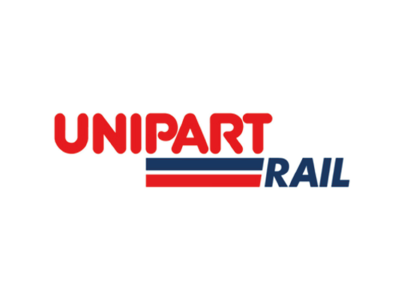






Our Services
-
Laser Scanning.
Laser scanning is a powerful tool for OEM's, SME's or individuals to cope with increasingly complex designs, short development cycles and fast new product launches. It can accurately digitise complex parts in their entirety in significantly less time than traditional methods: from cars to hand drills, mobile phones and kitchen appliances.
-
Reverse Engineering.
Our Reverse Engineering services use state-of-the-art tools and technologies to accurately scan the physical objects, capture the raw data, process it and turn it into highly accurate 3D CAD models. We specialise in reverse engineering Physical Products for various applications such as prototyping, mass manufacture, space claim and more.
-
Part Inspection.
Inspection is a complex process involving several analysis stages: 2D and 3D comparison, identifying boundary, geometry and silhouette deviation and testing adherence to tolerance limits. Inspection also provides Capability studies that help understand the limits of dimensions and tolerance limits within manufacturing processes.

Years in business.
8
Jobs completed.
8000+
Laser scanners.
14
Laser Scanning Overview.
Whether a car, hand drill or mobile phone, customers expect tightly-toleranced parts to fit together and function perfectly and simultaneously be high quality and attractive design. But how do manufacturers ensure this precision level without delaying the product's development and launch?
The answer is to digitise the 3D shape and features of the prototypes with a non-contact laser scanner mounted on a coordinate measuring machine (CMM) or articulated arm and compare the results to the original CAD designs. This is much faster to inspect a part than using a touch probe to take discrete measurements. With tens of thousands of points per second being captured by the laser and added to the point cloud, a complete inspection cycle is often between five and ten times faster than tactile probing.
Furthermore, with the latter technique, it is impossible to know what is happening between two adjacent discrete points, so the data is susceptible to imperfections in the inspected geometry. Parts that have flatness and roundness errors, edge rollover or burrs are particularly problematic. Radius compensation error is a further difficulty with tactile probing. When a stylus makes contact with the edges of a hole, the radius compensation may result in unexpected measurement points if a neighbouring surface is touched first.
OEMs are keen to keep down costs at every stage of the production cycle. The problem is that even a limited number of touch probe measurement points involve considerable programming overhead, and creating tactile scanning cycles is even more complicated, time-consuming and expensive. On the aerofoil surface of a turbine blade, 5-axis analogue scanning requires elaborate CMM programming to ensure that the probe tip continuously follows the part surface without colliding with it or the machine structure. Furthermore, the component needs to be clamped in a costly fixture.
With non-contact laser scanning, there are fewer restrictions, so overal costs are reduced. It is unnecessary to datum the component; it can be placed anywhere on the table in any orientation or held in a simple fixture. Programming laser scanning cycles is easier and faster, both online and offline, requiring only simple parallel sweeps of the head with short motion paths and limited or no head indexing.
Reduce Costs.
What Can We Scan?
Components of flexible, sensitive or fragile materials need a metrology solution that does not cause the part to move or mark its surface during an inspection. Manufacturers of such products will almost certainly look beyond tactile probing to 3D laser scanning.
Shiny and multi-coloured surfaces do not cause a problem either. Our laser scanners dynamically adapt the laser source intensity point by point to capture data from surfaces of varying colour or high reflectivity. This capability allows different sample materials and surface finishes to be inspected without operator intervention.
Intelligent intensity adaptation also helps automatic laser scanning of similar parts at different manufacturing stages, initially dealing perhaps with bare sheet metal parts and finally scanning finished products painted in any colour.
Early detection of product quality issues and understanding the root cause of a problem are essential to the rapid development of a new product. Digitising parts up-front and inspecting the virtual digital copies provides a high level of detailed knowledge by streamlining metrology operations and embedding them into an integrated, CAD-centred, design-to-manufacturing process.
The low-noise point cloud data captured by our Nikon Metrology laser scanners allow us to generate and access the required information quickly. We use Nikon Focus inspection software to automatically filter the data and produce smooth, highly detailed meshes aligned with nominal CAD geometry using best-fit, feature-align, or other techniques. A complete digital model comprising complex freeform surfaces and dimensional information is derived in minutes rather than days.
Laser scanning allows detailed feature information to be obtained from the measured point clouds. With hundreds of points measured on holes, slots and studs, the features can be extracted more accurately than tactile probing, during which often only a few points are measured. Full GD&T analysis toolboxes are available to inspect the location, cylindricity, parallelism and much more.
3D scanning reduces product development time since once the digital model of a prototype is available, product verification, engineering analyses and other functions can occur concurrently. On-screen, virtual assembly of multi-part products speeds fit and function analyses and shortens the prototyping phase. Often, as complete parts are measured, and more information is available, several iterations can be eliminated altogether from a product development cycle.
Why Should I Laser Scan?
Over 30 years industrial experience.
At Laser Scanning we are official partners with Nikon Metrology UK helping support new and existing customers with support, sales and services.
“We have worked with Laser Scanning for a number of years and I am astounded with the results they provide. They have increased our productivity and reduced our costs to manufacture. I can not recommend Laser Scanning highly enough.”
—Gordon Panter. Gripple


